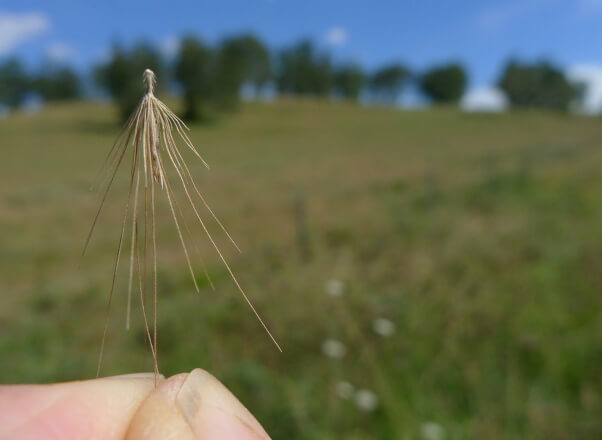A foxtail is a “spikelet” that carries a foxtail grass seed. These grasses grow mainly in the Western part of the U.S. Picture a blade of grass with a barbed weapon at its tip. The barbs can lodge themselves in your companion animal’s skin, feet, nose, mouth, ears, or genitals. The spikelets, or “awns,” have a hard, sharp tip so that they can drill into the ground to allow the seeds to germinate, so imagine what they can do to animal tissue. Foxtails are designed to migrate and can burrow into a dog or cat’s body and even reach the brain or internal organs, causing pain, infection, abscesses, perforated lungs, and even death. Although long-haired dogs are at a higher risk of foxtails’ aggressive attacks, short-haired dogs with open, upright ears are also especially vulnerable, as the barbs can sail directly into the ear canal.
Here’s a quick guide for you to use to familiarize yourself with this common but dangerous weed and the symptoms of an embedded foxtail so that you’ll be better able to avoid it or to assist your animal companions if they do get one.
Preventive Measures
- Be vigilant during dry, warm weather (“foxtail season”), especially in the summer.
- Don’t walk dogs in overgrown grass or on trails with foxtails.
- Check these body parts frequently, especially after a walk or hike:
- ears
- feet (including in between the toes)
- nose
- mouth
- genitals
- eyes
- armpits
- Brush dogs after walks or run your hands through their fur to check for any barbs.
- For dogs with open and exposed ears, try tying a bandana around their head or put a cotton ball in each ear. Keep dogs’ hair trimmed during “foxtail season.” (You can even ask a groomer for a “foxtail cut.”)
- Pull out any foxtail weeds in your yard by the roots. (Don’t mow them!)
Signs That an Animal May Have Picked Up a Foxtail
- Limping
- Swollen foot pads
- Incessant scratching or licking (particularly of feet or genitals)
- Head shaking or tilting
- Eye discharge, swelling, or redness
- Nose discharge or frequent sneezing
What to Do if You Find a Foxtail on an Animal
Remember this cardinal rule: A burrowed foxtail can’t remove itself from your companion animal, and, even worse, it can dig deeper and cause bigger problems. If you find a foxtail in an animal’s fur, you can carefully remove it with tweezers, but if it’s in any way lodged in the skin or you suspect that it has entered the animal’s body, get to a veterinarian immediately.










